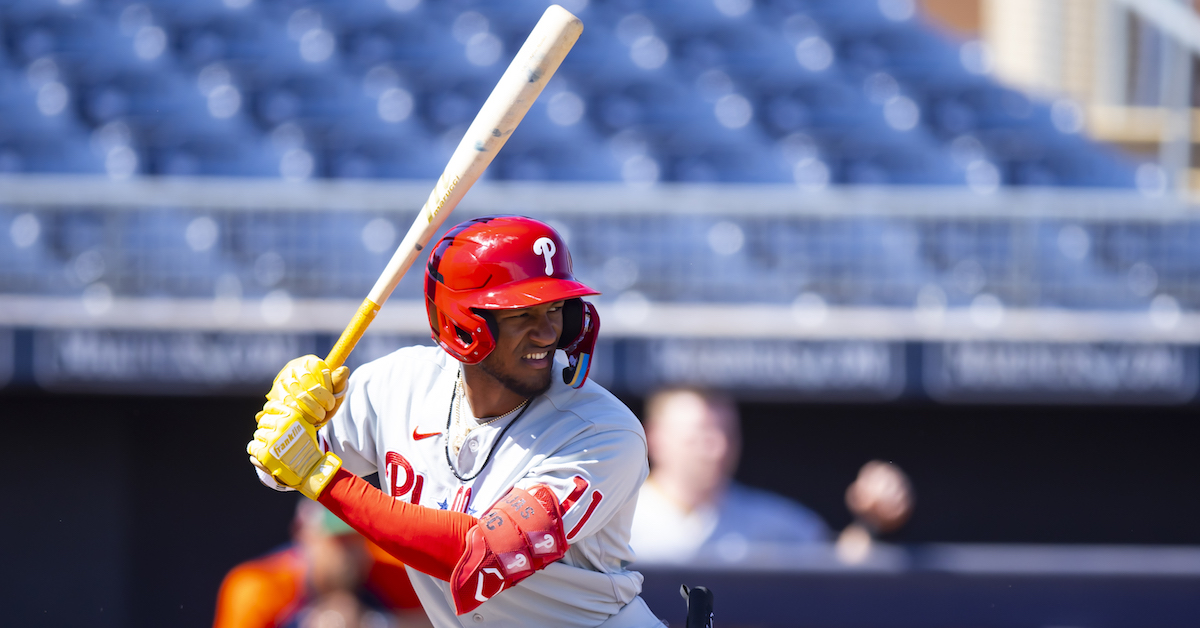JAWS and the 2023 Hall of Fame Ballot: Mark Buehrle

The following article is part of Jay Jaffe’s ongoing look at the candidates on the BBWAA 2023 Hall of Fame ballot. Originally written for the 2021 election, it has been updated to reflect recent voting results as well as additional research. For a detailed introduction to this year’s ballot, and other candidates in the series, use the tool above; an introduction to JAWS can be found here. For a tentative schedule and a chance to fill out a Hall of Fame ballot for our crowdsourcing project, see here. All WAR figures refer to the Baseball-Reference version unless otherwise indicated.
At a moment when baseball is so obsessed with velocity, it’s remarkable to remember how recently it was that a pitcher could thrive, year in and year out, despite averaging in the 85–87 mph range with his fastball. Yet that’s exactly what Mark Buehrle did over the course of his 16-year career. Listed at 6-foot-2 and 240 pounds, the burly Buehrle was the epitome of the crafty lefty, an ultra-durable workhorse who didn’t dominate but who worked quickly, used a variety of pitches — four-seamer, sinker, cutter, curve, changeup — moving a variety of directions to pound the strike zone, and relied on his fielders to make the plays behind him. From 2001 to ’14, he annually reached the 30-start and 200-inning plateaus, and he barely missed on the latter front in his final season.
August Fagerstrom summed up Buehrle so well in his 2016 appreciation that I can’t resist sharing a good chunk:
The way Buehrle succeeded was unique, of course. He got his ground balls, but he wasn’t the best at getting ground balls. He limited walks, but he wasn’t the best a limiting walks. He generated soft contact, but he wasn’t the best at generating soft contact. Buehrle simply avoided damage with his sub-90 mph fastball by throwing strikes while simultaneously avoiding the middle of the plate:
That’s Buehrle’s entire career during the PITCHf/x era, and it’s something of a remarkable graphic. You see Buehrle living on the first-base edge of the zone, making sure to keep his pitches low, while also being able to spot the same pitch on the opposite side of the zone, for the most part avoiding the heart of the plate. Buehrle’s retained the ability to pitch this way until the end; just last year [2015], he led all of baseball in the percentage of pitches located on the horizontal edges of the plate.
Drafted and developed by the White Sox — practically plucked from obscurity, at that — Buehrle spent 12 of his 16 seasons on the South Side, making four All-Star teams and helping Chicago to three postseason appearances, including its 2005 World Series win, which broke the franchise’s 88-year championship drought. While with the White Sox, he became just the second pitcher in franchise history to throw multiple no-hitters, first doing so in 2007 against the Rangers and then adding a perfect game in ’09 against the Rays. After his time in Chicago, he spent a sour season with the newly-rebranded Miami Marlins, and when that predictably melted down, spent three years with the Blue Jays, helping them reach the playoffs for the first time in 22 years.
Though Buehrle reached the 200-win plateau in his final season, he was just 36 years old when he hung up his spikes, preventing him from more fully padding his counting stats or framing his case for Cooperstown in the best light. A closer look beyond the superficial numbers suggests that, while he’s the equal or better of several enshrined pitchers according to WAR and JAWS, he’s far off the standards. Like fellow lefty and ballot-mate Andy Pettitte, the boost that he gets from S-JAWS — a workload-adjusted version of starting pitcher JAWS that I introduced last year — doesn’t improve his case enough to sway me. He’s received a smattering of support, but his drop from 11% in 2021 to 5.8% last year shows that his candidacy is on life support. Read the rest of this entry »








